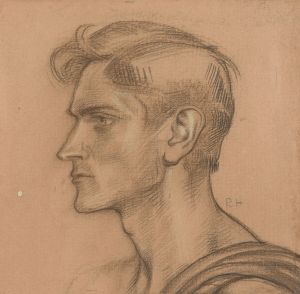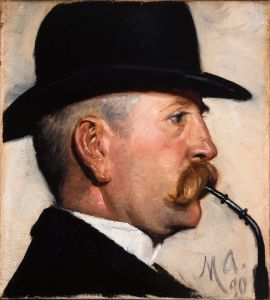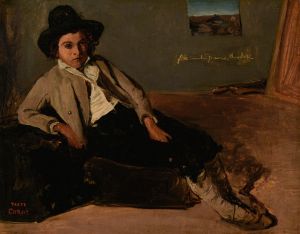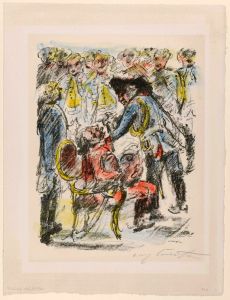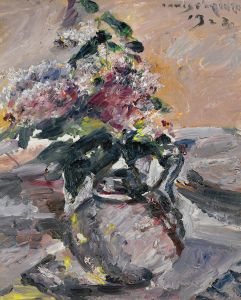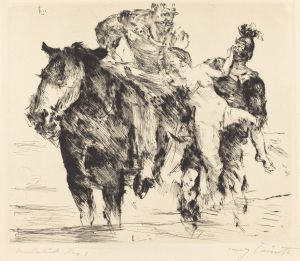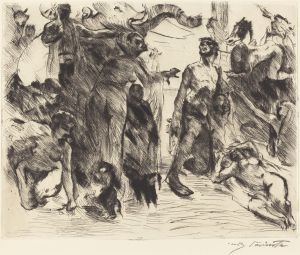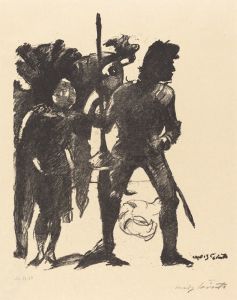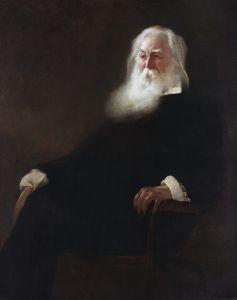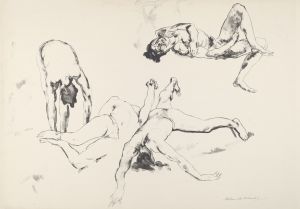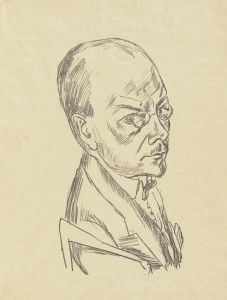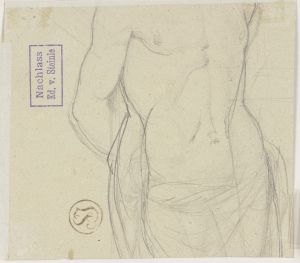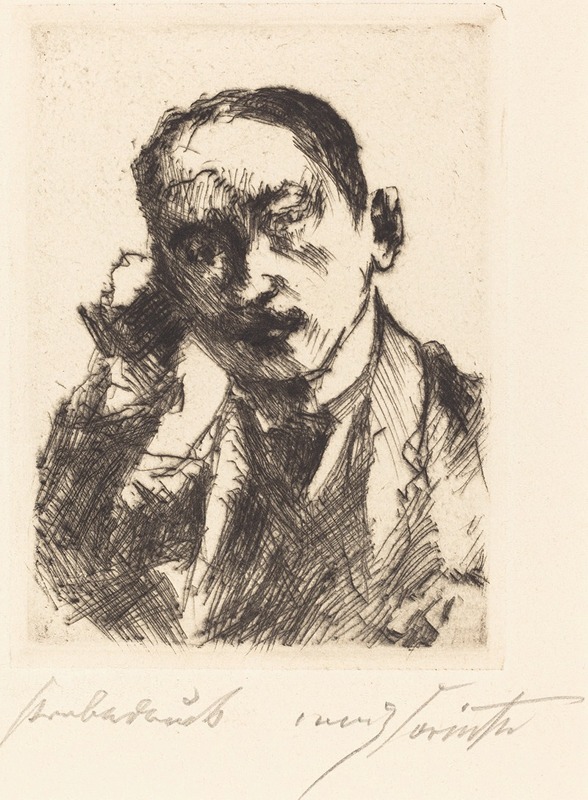
Karl Schwarz
A hand-painted replica of Lovis Corinth’s masterpiece Karl Schwarz, meticulously crafted by professional artists to capture the true essence of the original. Each piece is created with museum-quality canvas and rare mineral pigments, carefully painted by experienced artists with delicate brushstrokes and rich, layered colors to perfectly recreate the texture of the original artwork. Unlike machine-printed reproductions, this hand-painted version brings the painting to life, infused with the artist’s emotions and skill in every stroke. Whether for personal collection or home decoration, it instantly elevates the artistic atmosphere of any space.
"Karl Schwarz" is a portrait painted by the German artist Lovis Corinth in 1916. Lovis Corinth, born on July 21, 1858, in Tapiau, East Prussia (now Gvardeysk, Russia), was a prominent figure in the German art scene and a leading member of the Berlin Secession. He is known for his vigorous brushwork and vibrant use of color, which are evident in his diverse body of work that includes portraits, landscapes, and historical scenes.
The subject of the painting, Karl Schwarz, was a notable art historian and museum director. Born on October 18, 1885, in Vienna, Schwarz was a significant figure in the Jewish cultural community and played an essential role in the promotion of modern art in Germany. He later became the first director of the Jewish Museum in Berlin, which opened in 1933.
The portrait of Karl Schwarz by Lovis Corinth is an oil painting that exemplifies Corinth's mature style, characterized by a loose, expressive technique and a keen psychological insight into his subjects. In this work, Corinth captures Schwarz's intellectual presence and contemplative demeanor. The painting is noted for its dynamic brushstrokes and the interplay of light and shadow, which give the portrait a sense of immediacy and vitality.
Lovis Corinth's approach to portraiture often involved a deep engagement with his sitters, aiming to reveal their inner character and emotions. In the case of Karl Schwarz, Corinth's portrayal is both respectful and intimate, reflecting the mutual respect between the artist and the art historian. The background of the painting is relatively simple, ensuring that the focus remains on Schwarz's face and expression.
The painting of Karl Schwarz is part of Lovis Corinth's broader oeuvre, which includes many significant portraits of contemporaries in the arts and intellectual circles. Corinth's work during this period is marked by a transition from his earlier, more structured compositions to a freer, more expressive style, influenced by his personal experiences and the turbulent historical context of World War I.
Karl Schwarz's contributions to the art world, particularly in the context of Jewish cultural heritage, were significant. His work at the Jewish Museum in Berlin was pioneering, although his tenure was cut short by the rise of the Nazi regime. Schwarz emigrated to Palestine in 1933, where he continued his work in the arts until his death in 1962.
The portrait of Karl Schwarz by Lovis Corinth remains an important piece, not only for its artistic merit but also for its historical significance, capturing a moment in time and the likeness of a key figure in the art world. The painting is a testament to Corinth's skill as a portraitist and his ability to convey the essence of his subjects through his dynamic and expressive style.





